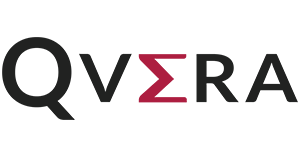Millennium Physician Group:
Reduced burden, Increased ACO benefits
In 2019, Florida-based Millennium Physician Group won the Healthcare Innovation Innovator Award for achieving unprecedented success in the Medicare Shared Savings Program (MSSP). Now, with the help of Qvera Interface Engine (QIE), the group is taking another step on its journey toward value-based care: digitally transforming the claims submission process for all payer types.
Policymakers are increasingly moving to define and legislate quality-improving, cost-saving measures for the U.S. healthcare system, and data is front and center in the discussion. Health technologies like QIE are designed to make mountains of data inter-operable, usable and shareable. Today Millennium’s innovative application of this technology is proving that data can be leveraged to simultaneously demonstrate care enhancements, offer provider benefits and deliver financial gains.
Bottlenecks and budget cuts
Ryan Williams, Clinical Systems Manager for Millennium’s Technology and Innovation Services Department, learned from the group’s Director of Quality Programs in early 2020 that multiple staff members were spending all of their time submitting quality measure data to payers for reimbursement.
“This director wanted a way to automate some of the work so her team could include data for more patients and bring our quality scores up even higher than they already were,” Williams says. “In addition to saving money not having to hire additional staff, our Medicare Advantage contracts will provide us cash incentives if we meet certain quality thresholds for the patient population assigned to us.”
Williams’ team tried developing a test project to automate submission of a single Healthcare Effectiveness Data and Information Set (HEDIS) measure, Adult BMI. “The process involved combining multiple reports pulled from our EHR and each insurance company’s website into Excel, then creating a file that could be sent to our billing system,” Williams explains.
Millennium successfully sent data for one batch of patients for a single measure to a single payer — and then shelved the project. “There were too many moving parts and things that could go wrong with a manual process like that, and we didn’t have the tools or time we needed to improve and complete it,” Williams says.
But rather than fading into the background, the problem worsened mere weeks later when COVID-19 struck the U.S., prompting company-wide budget cuts and stretching the quality team even further.
“In the wake of COVID-19, the automation project returned to the forefront,” Williams says. “Fortunately, we had acquired two new tools, Qvera and Snowflake, that allowed us to think about picking it up again.”
Snowflake, a cloud-based data warehouse, was added as an end-user feature to Millennium’s athenahealth EHR. Having EHR data ready to access through Snowflake would eliminate the need for manual manipulation of reports.
With these tools, the developers were confident they could design a custom interface that would completely automate data compilation for HEDIS measures. It was time to get building.
Developing the QIE interface
Williams decided to bring along a new developer, Craig Fischer, to learn QIE and help develop the interface. “Craig usually programs in C#, and this was his first HL7® project,” Williams says. “I gave him about a 30-minute run-through of QIE and demonstrated the code wizards, help file and Knowledge Base, and he was writing code in no time.”
When the two hit a small snag, Williams picked up the phone. “I figured I could search through the Knowledge Base for the answer, but I thought it would be best to introduce Craig to the primary reason I recommend Qvera to anyone who needs an interface engine: the support team,” he says.
“I wanted to make sure he knew that if he ran into a roadblock, rather than waste hours figuring it out himself or coding in a complex workaround, a quick call to support would get him access to an actual engineer at Qvera and not a ticket taker.”
Michael Hutton at Qvera Customer Support took the call, answered their questions and made recommendations about how to improve the design and implementation of the interface. He also scheduled a meeting to walk through a few more of QIE’s features with Fischer.
“Michael was able to get us up and running in no time, and Craig quickly got comfortable developing within Qvera,” Williams says.
“On the first run, the interface will likely push us over the five-star quality threshold with at least one carrier, a goal we were several thousand patients away from before we went live”
Ryan Williams – Clinical Systems Manager – Millennium Physician Group
Automating HEDIS measure data
Williams and Fischer designed the new interface to pull information relevant to specific HEDIS measures from Millennium’s EHR and internal claims data, as well as to determine accurate CPT II billing codes for these claims. This would allow the group to quickly submit claims to payers, plus identify any missing claims and erroneous data.
CPT II codes are based on discrete data fields within patients’ medical records, such as those stored as vitals and labs. The new interface was set up to query athenahealth’s Snowflake data warehouse for information associated with three HEDIs measures: Diabetes HbA1c Testing, Adult BMI, and Hypertension Blood Pressure Control.
“We were able to load the Snowflake driver into QIE, run an SQL query to pull the discrete data fields we needed, pull prior claims data to determine whether or not a claim had already been sent, and generate a DFT (charge) message to athenahealth for any claim that was missing,” Williams says. “We also produced a second CSV file for the Quality team, so they could review the list of all claims generated, as well as any claims that were skipped.”
Skipped claims usually include missing or out-of-range data that needs to be resolved. “We might have a BMI or systolic blood pressure over 1,000, or alpha characters in a numeric field,” Williams explains. “The CSV file can be used to manually fix and process these exceptions.”
The moment of truth
The results of the first interface run were overwhelming, in the best way: Millennium’s new QIE interface generated more than 38,000 claims for nearly 60,000 total patient measures, pulling data from every encounter in the system for the current year.
“On the first run, the interface will likely push us over the five-star quality threshold with at least one carrier, a goal we were several thousand patients away from before we went live,” Williams reports. And there’s an added bonus — literally: “The quality bonus we will receive from the first batch alone will likely more than cover our annual fees for Qvera’s interoperability platform.”
This marked boost in productivity will free up multiple staff members to tackle other quality goals. “They can focus on closing gaps on additional encounter types and some of the more obscure measures,” Williams says.
The team has automated maintenance runs which trigger bi-weekly or monthly in order to keep up with new claims throughout the year. Next steps include determining which additional HEDIS measures can be automated. “My goal is to automate 100 percent of the measures where the underlying data is stored in discrete data fields in athenahealth,” Williams says.
The bottom line
The path to value-based care can often seem nebulous, but trailblazers like Millennium Physician Group are providing inspiration and direction for clinics that want to make their data work for them. The award-winning Qvera Interface Engine leverages data you already collect in order to benefit your practice, your patients and your bottom line.


